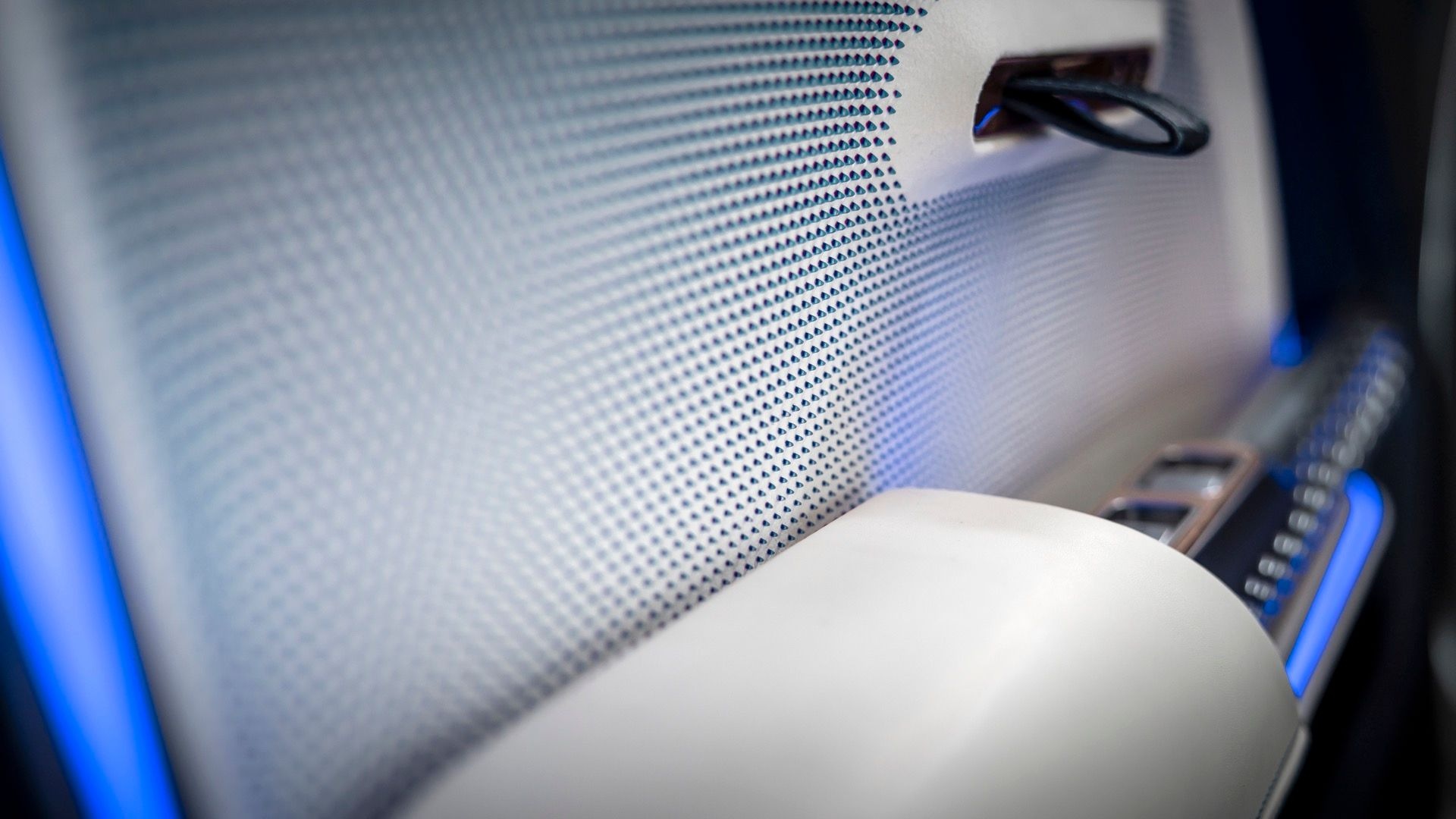Making the Vision EQXX a benchmark for EV efficiency meant avoiding a downward spiral.
It’s one of the main reasons Mercedes-Benz stuck to the idea of an air-cooled battery pack in the Vision EQXX concept. Listening to project manager Malte Sievers, it’s one of the key decision points in the project that helped allow it to outperform its original target: 1,000 km (621 miles) on a single charge, at real-world speeds.
“Putting the liquid-cooling system into that battery would have started a sort of spiral—and you can see this with a lot of larger systems,” Sievers explained to Green Car Reports last week, at Mercedes’ Immendingen proving grounds, before I was allowed some time in the driver's seat of this piece of the future (and the only such one on Earth).
To sum: Liquid cooling would have added weight and raised the height of the battery pack. That would have increased the height of the vehicle in order to maintain interior space—which would have increased the frontal area and affected aerodynamics. And that combined would increase the energy required and thus the size of the battery needed.
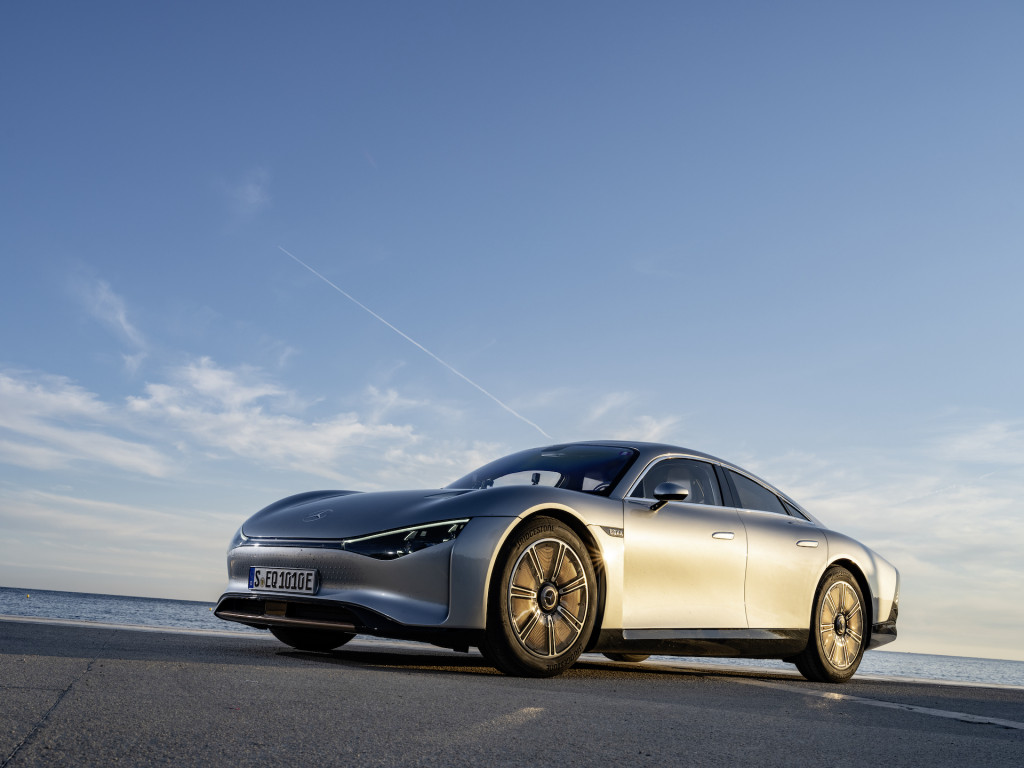
Mercedes-Benz Vision EQXX 1008-km run
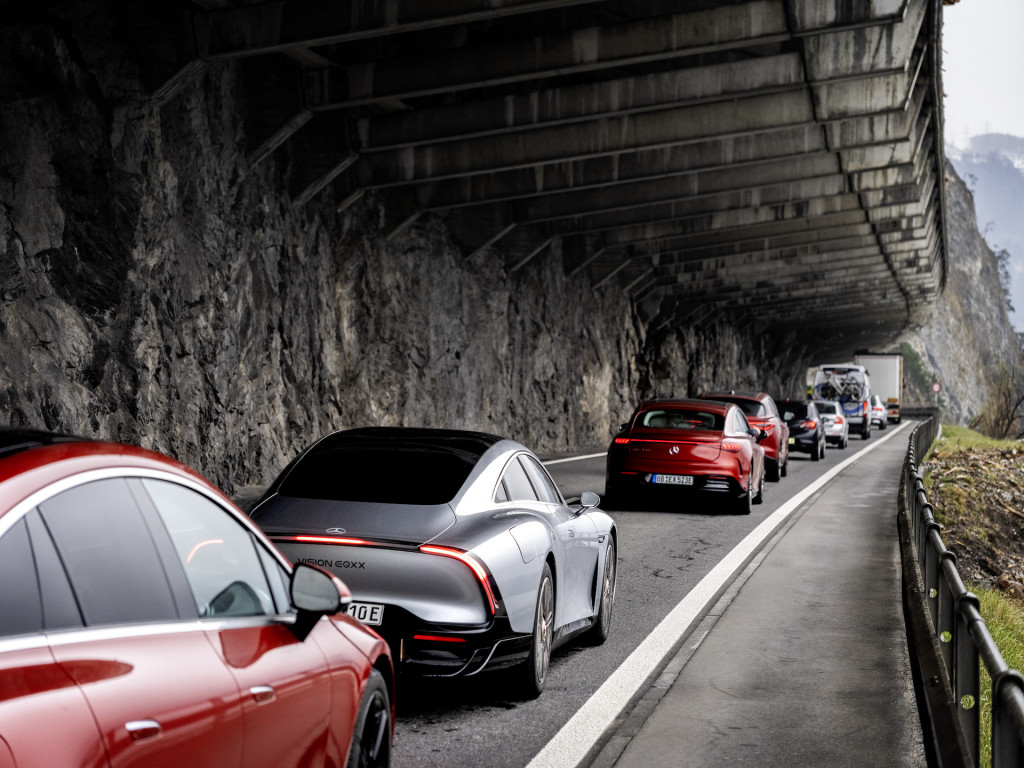
Mercedes-Benz Vision EQXX 1008-km run

Mercedes-Benz Vision EQXX 1008-km run
As we’ve already reported, the futuristic Vision EQXX is the most efficient car that Mercedes-Benz has ever built. In April the EQXX did a real-world range run, covering a 746-mile trip from Stuttgart, Germany, to Silverstone, England, on a single charge and with energy to spare for some victory laps.
The EQXX is not a production-bound vehicle in any way. It’s a proof point for how electric vehicles from the automaker might be made more efficient—a lot more efficient—in the future.
As Sievers outlined, the EQXX represents an all-hands approach, making sure every piece of the vehicle—including but not limited to the propulsion system—took the leanest and most efficiency-minded path possible.
“In order to make this car happen and make it the most efficient Mercedes we’ve ever built, you need to look at every single area of the car that has an impact on efficiency—and that’s basically everything,” he said.
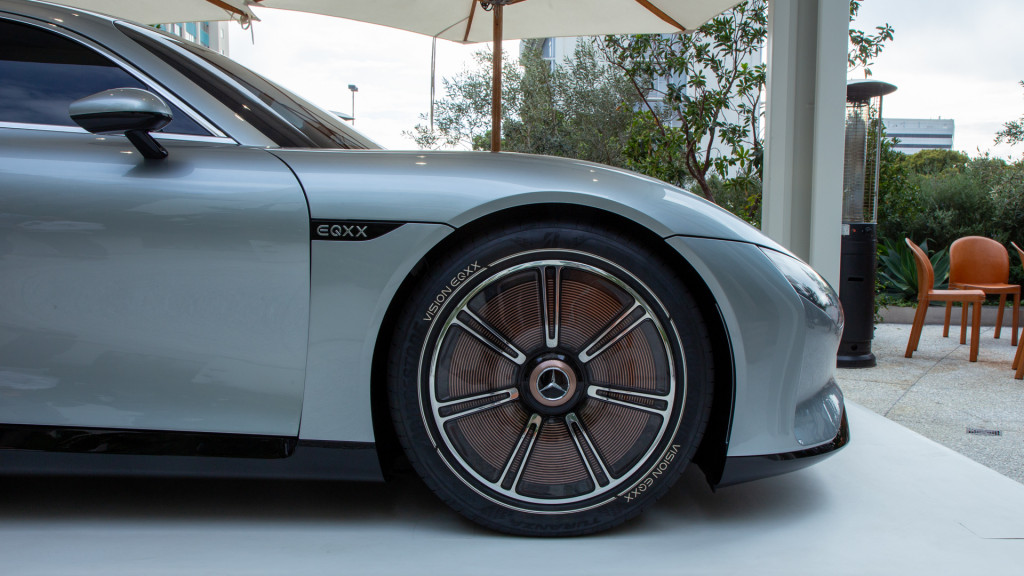
Mercedes-Benz Vision EQXX Concept
From the forged magnesium 20-inch wheels and slim, specially developed Bridgestone Turanza Eco tires that were developed expressly for the EQXX, to glass-fiber-reinforced plastic for the doors and an aluminum mega-casting at the rear of the vehicle, with integral damper towers, the EQXX is fighting for a different, more efficient future in all respects.
And when I circled back to ask more about how Mercedes cools the battery system in the Vision Concept, Sievers quipped, with a smirk: “We really don’t.”
He’s making a point. The EQXX battery pack has some very carefully selected cells, laid out in a way that doesn’t require anything more than outside air let in. Sometimes.
Sievers said that at the proving grounds, in summer heat, the EQXX’s pack hasn’t gotten significantly above ambient temperatures—86 degrees Fahrenheit while we were speaking, with a high of 99 degrees due for that afternoon. He reported from remote sensing that the pack was currently at 90 degrees.
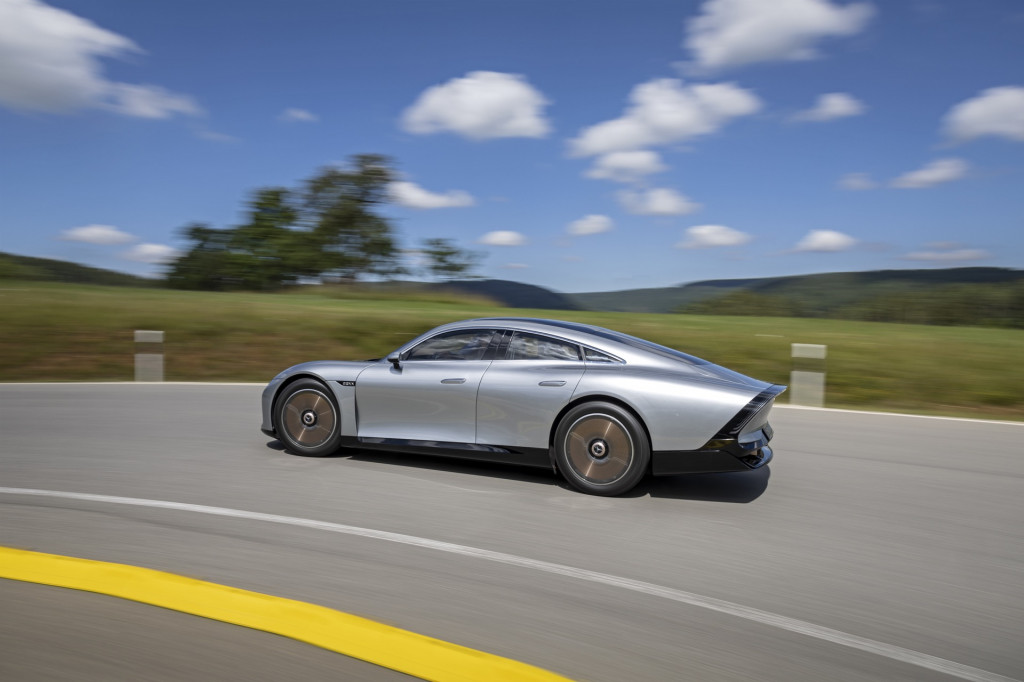
Mercedes-Benz Vision EQXX
As for those cells, Sievers commented that due to improvements in inner resistance, cells simply don’t heat up as much during charging as they used to in previous generations.
“It does show that there’s a lot to be gained, even while staying in the currently conventional chemistry,” he said, perhaps in a hint of what the automaker is considering for those future EVs. “And it’s not all just solid state; there are all sorts of new things just coming around.”
The EQXX doesn’t eschew cooling completely, though. There’s water cooling for the electric drive unit and inverter, plus an oil-water exchanger that helps keep the motor bearings cool. Shutters that open at the front of the vehicle open only when needed, allowing a thin sheet of air to pass through past the battery and those systems, pulling heat away.

Mercedes-Benz Vision EQXX 1008-km run
Mercedes-AMG High Performance Powertrains, which works with Formula E and Formula 1, designed the inverter for the car, which runs on a “plus-900-volt system.” The inverter has a lot of Formula E learnings built in and is a key part for how the overall efficiency of the electric drivetrain is 95% from cell to wheel. The inverter, Sievers said, looks “drastically different from anything we’ve done so far.”
“Basically we’re chasing every watt here,” said Julien Pillas, a lead engineer who worked specifically on the electric drive system.
Much of the drive-system development for the EQXX, which started in 2020, was done on an EQB nicknamed Emma—for the upcoming MMA platform. Due around the middle of the decade with models roughly the size of the Tesla Model 3 and Model Y, that platform will reap some of the benefits of the EQXX project.
Emma, the development mule crossover, weighs nearly 5,300 pounds—versus less than 3,900 pounds for the EQXX. But it has the EQXX’s air-cooled pack mounted below—with 100 kwh provided from just 1,089 pounds.
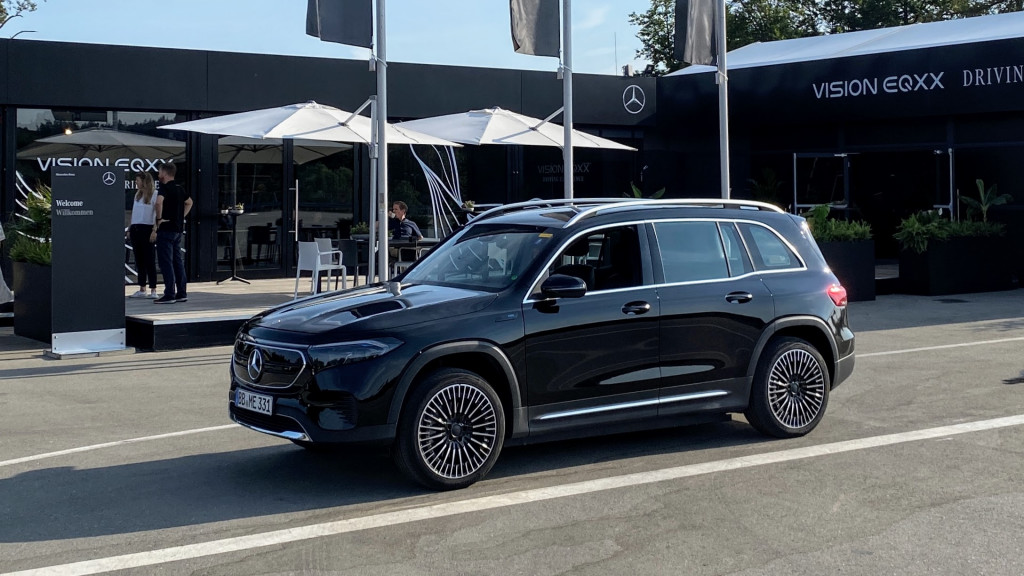
Mercedes EQB with EQXX battery and drive systems -
I got to take a spin in Emma first, on a closed course, to get a feel of the interface and the calibration of the accelerator and brakes, which are exactly the same as the EQXX (albeit with that extra mass). Part of that involved getting familiar with the regenerative braking, which is far more aggressive than in Mercedes’ current electric vehicles—keeping the modes ranging from D- (moderate regen) to D+ (gliding) but adding a “D--” mode that allows one-pedal driving without a brake hold. Keeping the most efficient in the EQXX also involved keeping light on the accelerator and staying within a 25-kw power band.
In the proving grounds crawling with engineers, they were keeping telemetry on us. So I was able to check in on efficiency—and a lot more—for my drives. Over a loop of about 16 km (10 miles)—covering a range of terrain and speeds up to 100 km/h (62 mph) and averaging about 50 km/h (30 mph)—I averaged 12.1 kwh/100 km (5.1 miles/kwh) in Emma, which is nearly double the efficiency I’d seen in a country-road loop in the EQB earlier that day.
That was proving the worth of the drive system. Now I headed out in the real thing—the EQXX with its beautiful aero body and 0.17 coefficient of drag.
I slid into the mushroom-based vegan leather-alternative seats and pull the Biosteel fiber door strap, adjusting the seat, and found it’s actually quite comfortable for my long-legged 6-foot-6 frame.
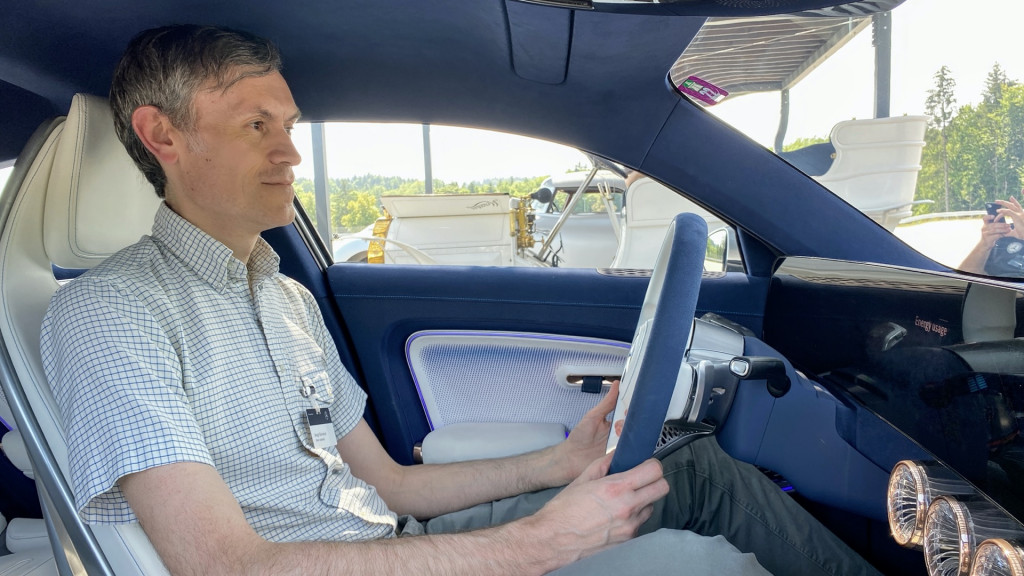
Mercedes-Benz Vision EQXX
The EQXX felt perkier for sure, and I found myself driving faster than in the SUV mule, requiring constant attention of the speedometer to keep within the proving grounds’ speed zones. While I heard the whine of the drive systems and a little bit of road noise, there was nearly no wind noise—the payoff of the aero.
After a little fun after the efficiency loop, I got a chance to tap into the full 180 kw (241 hp) and verify that communicative steering and a very low center of mass make this quite a fun vehicle to drive fast.

Efficiency for EQXX drive
And then, a final tally. In the EQXX, I’d averaged 8.39 kwh/100 km—about 7.4 miles per kwh, or about 45% better than what I saw in Emma. Or roughly double the distance on the same kwh than I’d be able to cover in most relatively efficient EVs on sale today.
One curious piece of the EQXX efficiency puzzle is solar. In the EQXX, it runs only into the 12-volt system, with no avenue for the energy to reach the traction battery. Peak power of the system is about 600 watts, with potential for the system to gain about 16 miles of range over an entire day.
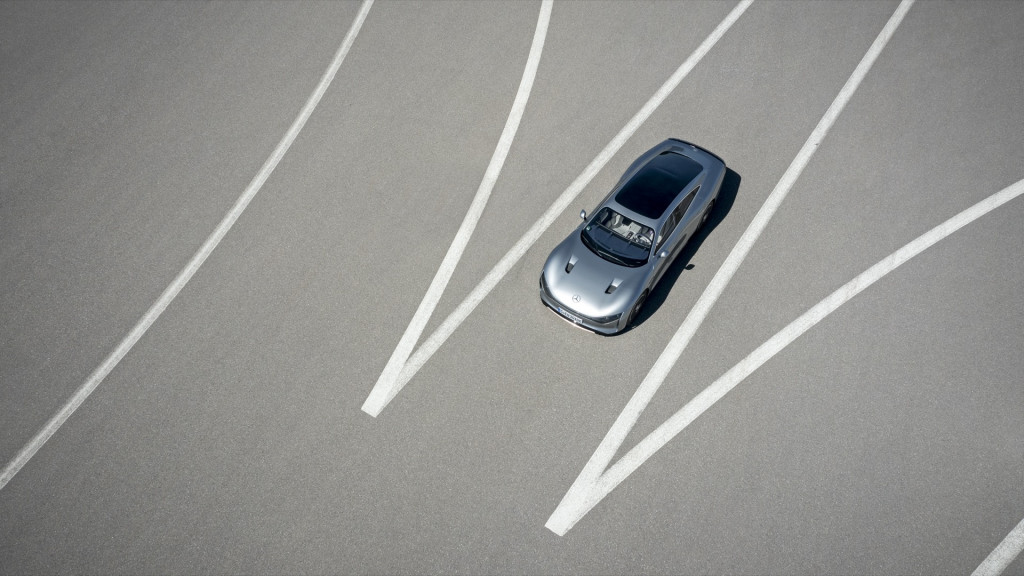
Mercedes-Benz Vision EQXX
Sievers admits that’s not necessarily the decision they would make in a production model—like omitting the onboard charger. But for the EQXX and its range-run purposes, it made the best sense and freed up the traction battery for high-voltage use—with occasional running of a DC-DC converter when needed. In the EQXX, the heat pump is run off the high-voltage system, but the rest of the climate control system, the steering, control units, infotainment system, and more are all run off 12 volts.
Likewise, the EQXX wasn’t built for fast-charging. Although its air-cooled pack can charge at a respectable 140 kw without heat buildup—enough to gain 186 miles of range in 15 minutes.
“We’re not trying to show that fast charging is wrong,” said Sievers. “While going for efficiency we figured out after the fact that this actually does help with charging quite a bit—this is the fun engineering side of this, that we’re actually finding out new things we didn’t see coming.”
Although those with the project hesitate to give any more hints about what exactly might make it into the production MMA electric vehicles, we’ll take that as one of the hints.
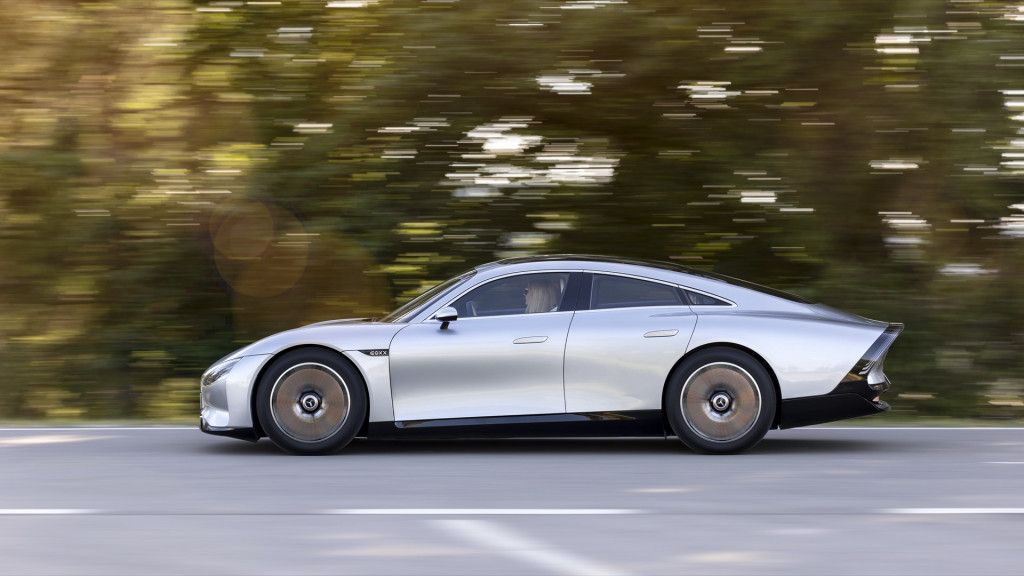
Mercedes-Benz Vision EQXX
In some respects the EQXX is this decade’s VW XL1, as a hyper-efficiency poster car. Although VW built the superlight diesel-hybrid XL1 in a very small number, just like the EQXX it was intended as a technology moonshot.
That said, after diving into why the EQXX exists—and driving it—I can say that even though the EQXX won't be produced, it means a lot more in helping to guide a generation of EVs away from that downward spiral.
–
Mercedes-Benz provided transportation and accommodations so that we could bring you this test drive review.





